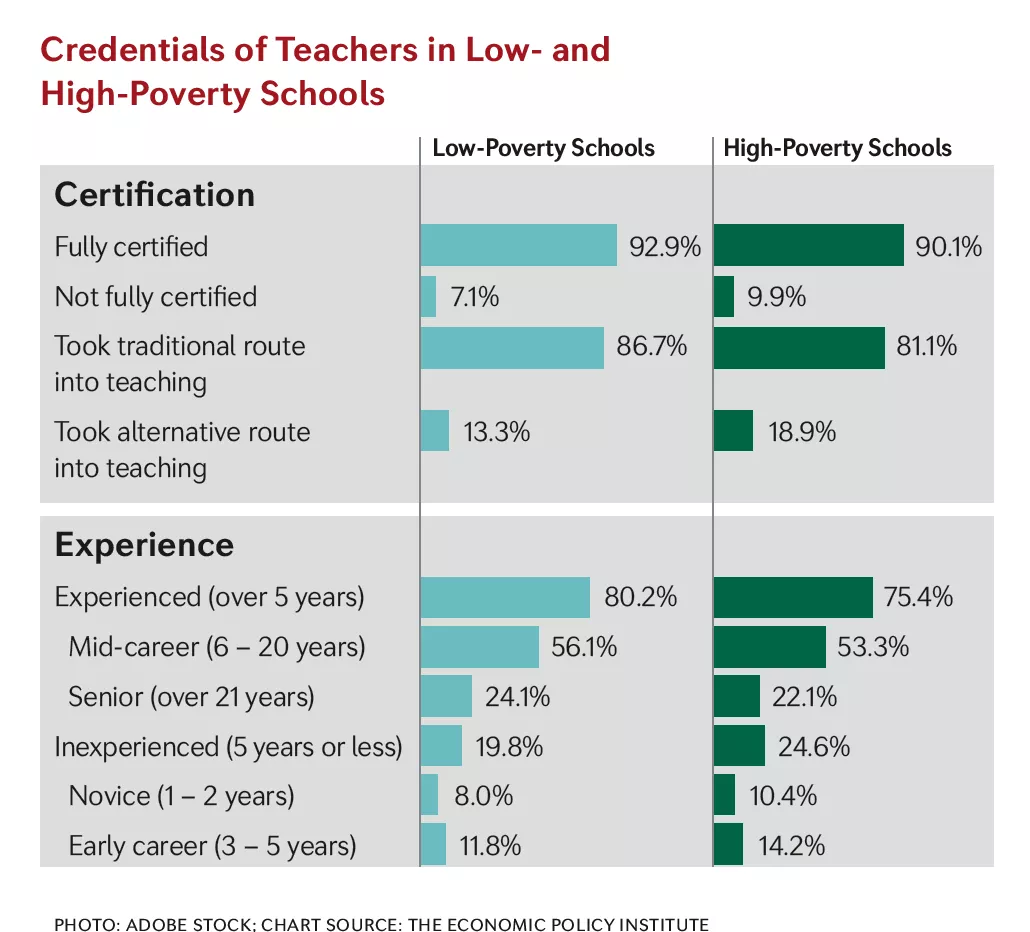While the teacher shortage is being felt across many states and school districts, its impact is not shared equally along socioeconomic lines, according to a new paper by the Economic Policy Institute (EPI).
Probably the most critical resource denied to many students is an experienced, fully certified teacher—a deficit that is “much more of an acute problem in high-poverty schools,” said EPI economist Emma García. “These shortages threaten students’ ability to learn and reduce teachers’ effectiveness, and high teacher turnover consumes economic resources that could be better deployed elsewhere.”

The EPI paper also finds that the established link between strong credentials and retention weakens in high-poverty schools, as attrition drains these schools of qualified teachers at a greater rate.
“We argue that when issues such as teacher quality and the unequal distribution of highly qualified teachers across schools serving different concentrations of low-income students are taken into consideration, the teacher shortage problem is much more severe than previously thought,” the EPI report said.

